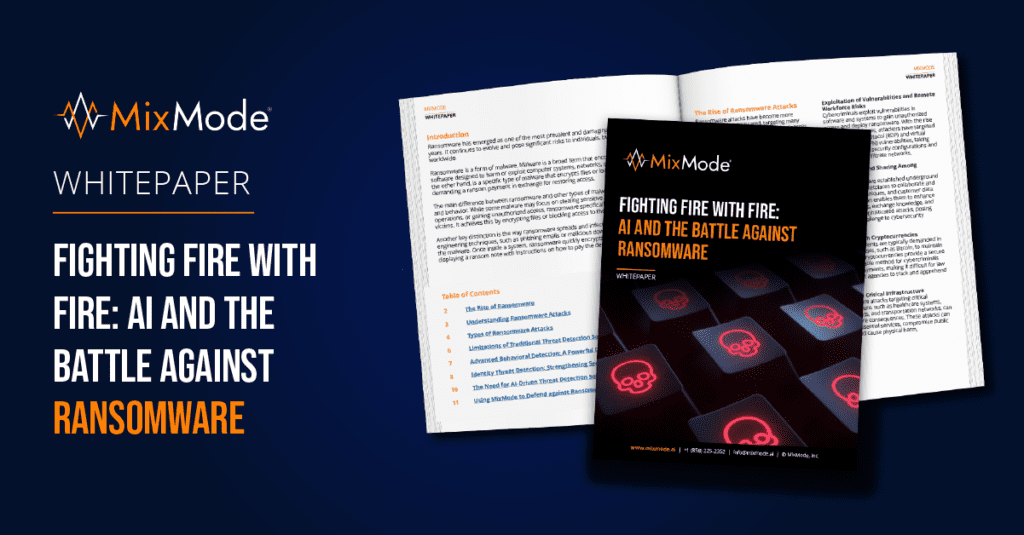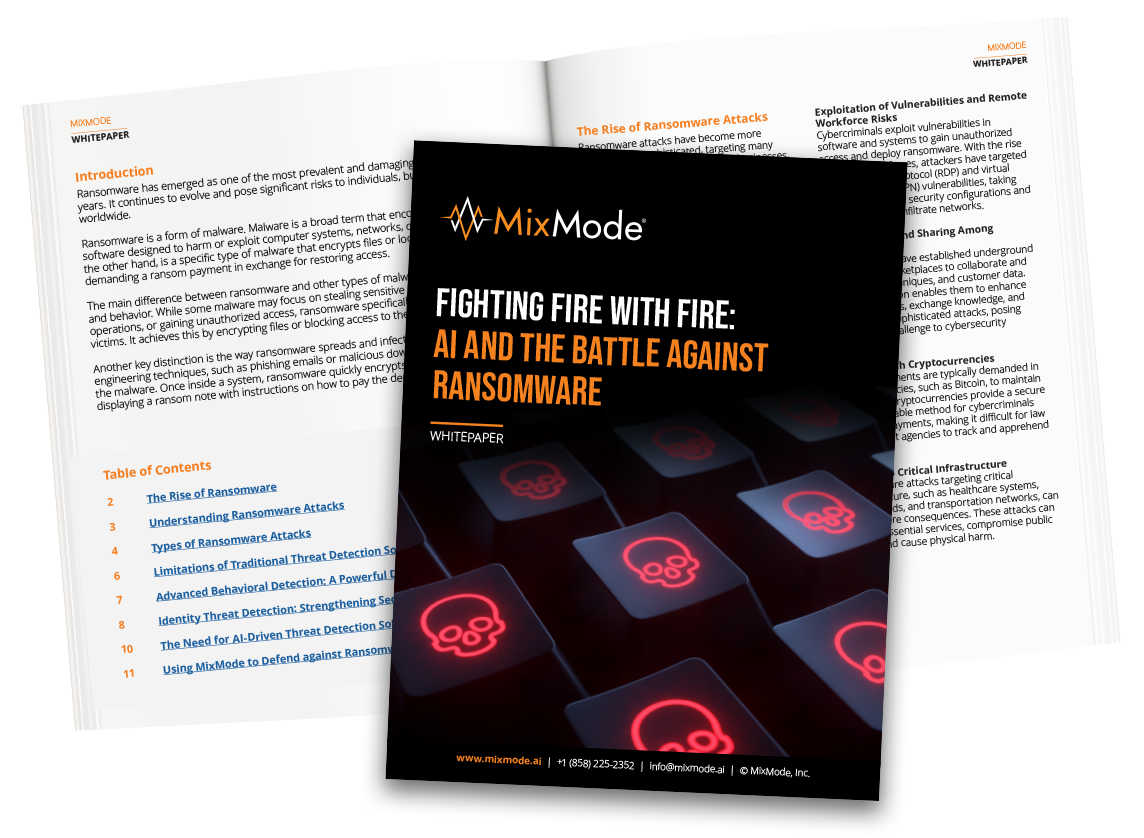Fighting Fire with Fire: AI and the Battle Against Ransomware
Ransomware has emerged as one of the most prevalent and damaging cyber threats in recent years. It continues to evolve and pose significant risks to individuals, businesses, and organizations worldwide.
Ransomware is a form of malware. Malware is a broad term that encompasses any malicious software designed to harm or exploit computer systems, networks, or devices. Ransomware, on the other hand, is a specific type of malware that encrypts files or locks users out of their systems, demanding a ransom payment in exchange for restoring access.

The main difference between ransomware and other types of malware lies in their intended purpose and behavior. While some malware may focus on stealing sensitive information, disrupting system operations, or gaining unauthorized access, ransomware specifically aims to extort money from its victims. It achieves this by encrypting files or blocking access to the system until the ransom is paid.
Another key distinction is the way ransomware spreads and infects systems. It often relies on social engineering techniques, such as phishing emails or malicious downloads, to trick users into executing the malware. Once inside a system, ransomware quickly encrypts files or locks the user out, displaying a ransom note with instructions on how to pay the demanded amount.

Ransomware attacks have become increasingly sophisticated and targeted in recent years. Attackers are now developing ransomware specifically designed to target enterprise organizations, as well as using AI to develop novel attacks, using various methods to gain access, including phishing attacks, exploiting vulnerabilities in software and operating systems, and purchasing stolen credentials on the dark web.
Recent reports show that ransomware attacks continue to increase at a record-breaking pace:
- 2023 Ransomware Attacks Up More Than 95% Over 2022, (Corvus Insurance Q3 Report)
- The average ransom payment in 2023 is $1.54 million. (Sophos, 2023)
- 72 percent of businesses worldwide were affected by ransomware attacks in 2023. (Statista, 2023)
Ransomware attacks can have a devastating impact on enterprise organizations. In addition to the ransom payment, organizations face the cost of recovering from the attack, such as downtime, lost productivity, and damage to their reputation.
AI-driven threat detection and response solutions can significantly enhance the defense against ransomware attacks. These solutions provide advanced capabilities for detecting, analyzing, and responding to ransomware attacks.
Download our whitepaper to learn more and how The MixMode Platform can help organizations defend against ransomware and AI-generated attacks.
Other MixMode Articles You Might Like
Defense-in-Depth: A Comprehensive Approach to Modern Cybersecurity
Overcoming Cloud Security Challenges: The Power of Cloud-Native AI-Driven Solutions
Under Siege: Ransomware and Your Business
Ethan Caldwell, Chief Development Officer of MixMode, Joins Forbes Technology Council
Fighting Fire with Fire - AI and the Battle Against Ransomware

Whitepaper: Fighting Fire with Fire - AI and the Battle Against Ransomware
Ransomware has emerged as one of the most prevalent and damaging cyber threats in recent years, posing significant risks to individuals, businesses, and organizations worldwide.
Our whitepaper, titled "Fighting Fire with Fire - AI and the Battle Against Ransomware," delves into the heart of this critical issue. In it, we explore
- The rise of modern sophisticated ransomware attacks
- The motivations behind the types of ransomware currently in circulation
- The limitations of traditional threat detection solutions for detecting new forms of Ransomware
- Using advanced behavioral detection with AI as a powerful Ransomware defense mechanism.
The whitepaper also emphasizes the need for AI-driven threat detection solutions and how they can significantly enhance your organization's cybersecurity posture. As you navigate the complex and evolving world of Ransomware, this whitepaper serves as an indispensable guide to help you stay ahead of the curve.
Download the Whitepaper
Complete this form to download the Whitepaper
Ready to join the next wave of Cybersecurity?
Stop wasting time and money with outdated threat detection solutions, get a demo of MixMode today and learn how you can improve your security capabilities.


.png)